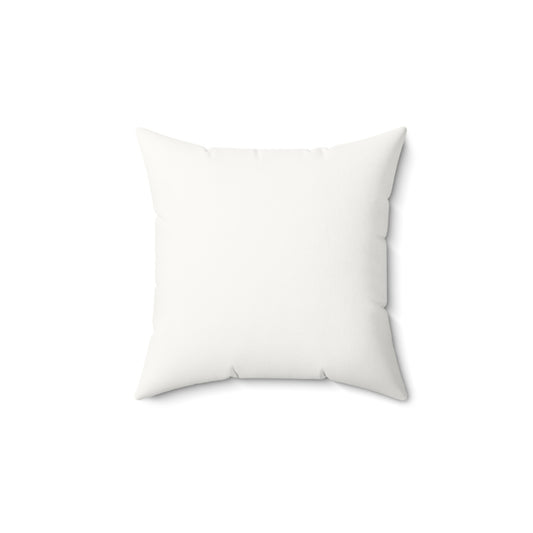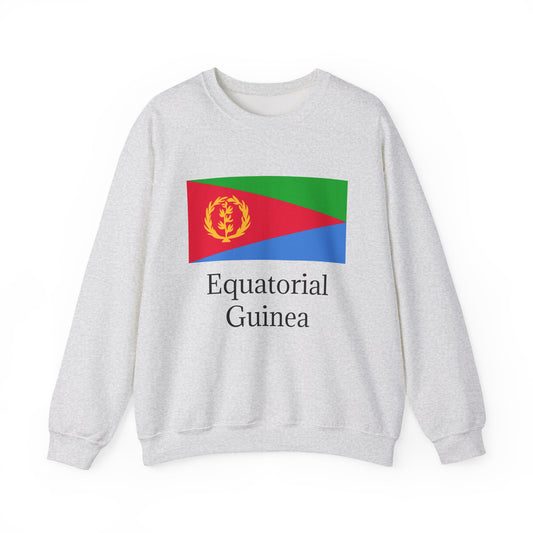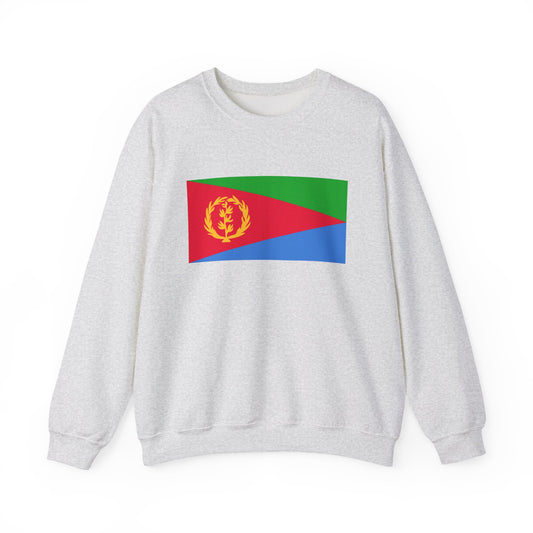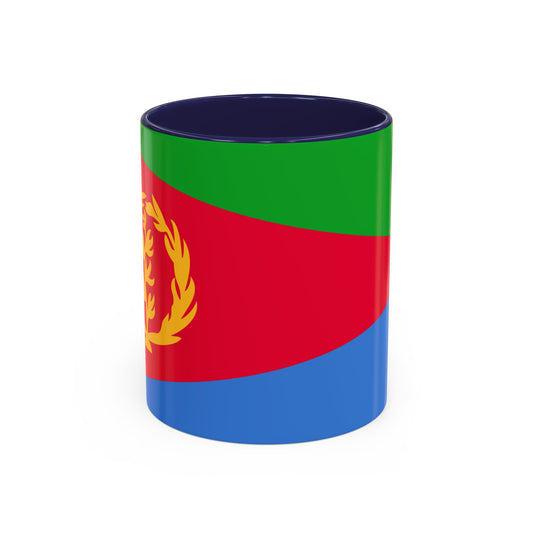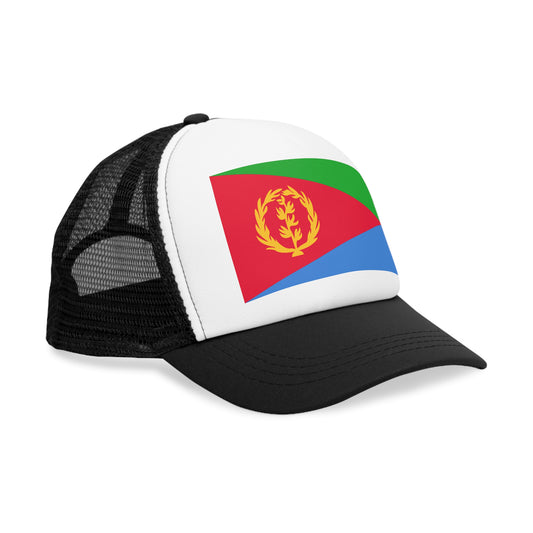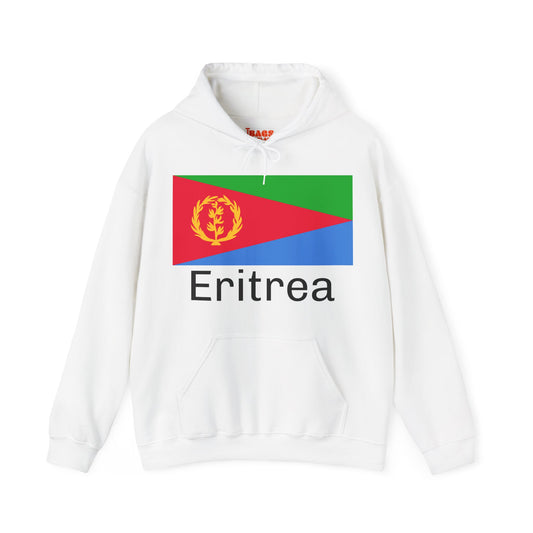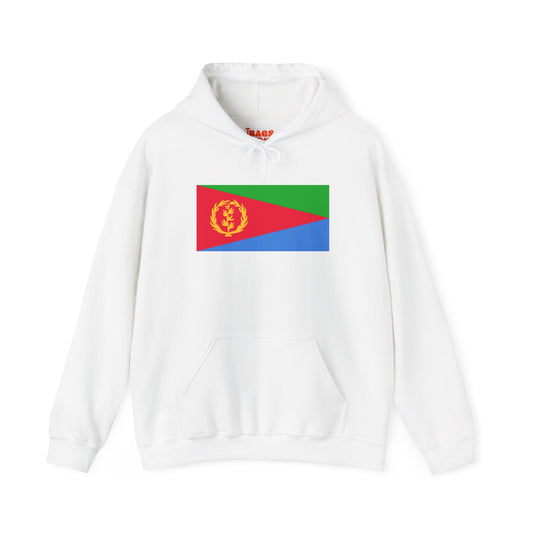-
Eritrea Leather Patch Hat
Regular price $18.85 USDRegular priceUnit price / per -
Eritrea Pillow
Regular price $22.65 USDRegular priceUnit price / per -
Eritrea Backpack
Regular price $59.79 USDRegular priceUnit price / per -
Eritrea Sweatshirt
Regular price $34.15 USDRegular priceUnit price / per -
Eritrea Flag Sweatshirt
Regular price $34.15 USDRegular priceUnit price / per -
Eritrea Mug
Regular price $11.65 USDRegular priceUnit price / per -
Eritrea Trucker Cap
Regular price $14.90 USDRegular priceUnit price / per -
Eritrea Hoodies
Regular price $34.40 USDRegular priceUnit price / per -
Eritrea T-shirts
Regular price $22.79 USDRegular priceUnit price / per -
Eritrea Flag Hoodies
Regular price $34.40 USDRegular priceUnit price / per -
Eritrea Flag on T-shirt
Regular price $22.79 USDRegular priceUnit price / per
Collection: Eritrea
The Eritrea flag, also known as the flag of Eritrea, is a symbol of national pride and identity for the East African country. With its unique design and colors, the flag holds significant meaning for the people of Eritrea. We will look closer at the Eritrea flag, from its adoption to its present-day use.
Overview of the Flag's Design and Colors

The design of the Eritrea flag incorporates a striking and meaningful array of colors arranged in a horizontal tricolor layout. At the top is a band of green, symbolizing the nation's fertile lands and agricultural wealth. The middle stripe is red, a vivid reminder of the sacrifices made during the long struggle for independence. Completing the tricolor is a broad blue band at the base, representing the significance of the Red Sea to Eritrea's geography and economy. Central to the flag's design is a golden wreath that encircles an olive branch, positioned in the flag’s center against the red stripe, adding depth to the flag's symbolism. Anchoring the design is a gold star in the upper left corner, which shines as a beacon of hope and a bright future for the country. This careful selection of symbols and colors embodies the resilience, unity, and aspirations of the Eritrean people, making the flag a national emblem and a narrative of Eritrea's past, present, and envisioned future.
Historical Context

The Eritrea flag was officially adopted on December 5, 1995, marking a significant milestone in the nation's history. This date came after Eritrea's formal declaration of independence from Ethiopia in 1993, culminating in a 30-year-long struggle for freedom that began in the early 1960s. The current flag's design evolved from the emblem used by the Eritrean People's Liberation Front during the independence movement. The original design featured the same colors but was later modified to include the wreath, olive branch, and star to symbolize the country's aspirations for peace, prosperity, and a hopeful future. These changes were made to reflect the shift from a conflict period to rebuilding and development. The adoption of the flag was not just the introduction of a new national symbol but also a representation of the resilience and unity of the Eritrean people through decades of struggle and their vision for the nation's path forward.
Symbolism Behind the Flag
Each element of the Eritrea flag is imbued with deep symbolism that reflects the country’s journey, values, and hopes. The green stripe at the top is a nod to Eritrea's agricultural richness and significance as a lifeline for the nation's economy and sustenance. This green banner celebrates the fertility of the land that has sustained generations. The central red stripe carries a poignant message, representing the courage and blood of those who fought and died in the struggle for Eritrea's independence. It serves as a solemn reminder of the sacrifices for freedom and sovereignty. The blue at the bottom symbolizes the Red Sea, a crucial element of Eritrea's identity, geography, and economic prosperity, highlighting its strategic importance and maritime heritage.
At the heart of the flag, the golden wreath and olive branch are universal symbols of peace and reconciliation. After years of conflict, they signify the nation's desire for harmony and unity. Including these symbols emphasizes Eritrea's commitment to building a peaceful future for all its citizens. Anchoring these symbols is the gold star, which shines as a symbol of hope and bright prospects. It underscores the optimism and aspirations that the Eritrean people hold for their country, reflecting a steadfast belief in progress and a better tomorrow.
Current Relevance
Today, the Eritrea flag remains a central emblem in the nation's public life, flying high during significant national celebrations, military commemorations, and various government buildings. Its presence at these events is a powerful reminder of the nation's unity and its citizens' shared vision for the future. In educational institutions and during international sports competitions, the flag fosters a sense of national pride and belonging among Eritreans both at home and abroad.
The flag's usage extends beyond merely symbolic displays; it is deeply woven into the fabric of daily life in Eritrea, serving as a point of reference for the nation's values and historical narrative. Despite this, the flag—and what it represents—has been central to discussions and sometimes controversies, particularly in a global dialogue about governance and human rights within the country. These discussions highlight the complex relationship between national symbols and their interpretation against the backdrop of a country's internal and external policies.
Amidst these debates, the flag remains an unwavering symbol of the Eritrean people's hopes and aspirations. Political discourse does not diminish its significance; rather, it underscores the ongoing dialogue about the nation's path forward and its place within the international community.
Additional Facts
Regarding the ceremonial respect afforded to the Eritrea flag, established conventions ensure its dignified display. It's considered a grave disrespect for the flag to contact the ground, emphasizing the need for careful handling during various ceremonies and displays. The protocols surrounding the raising and lowering the flag are observed with precision, especially during national events and holidays, to honor the country's journey and sacrifices. An exciting aspect of the Eritrea flag's inception is its creation by a collective of Eritrean artists and intellectuals.
This group was tasked with encapsulating Eritrea's tumultuous history, rich cultural heritage, and aspirations for peace and prosperity in a single emblem. Their collaboration resulted in a flag that represents the nation's identity and stands as a beacon of hope and unity for Eritreans everywhere. This collective effort highlights the flag's role as a unifying symbol, thoughtfully designed to reflect the resilience and shared dreams of the Eritrean people.




